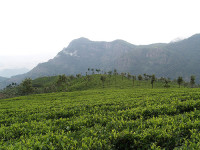Mixed Forecast for India’s Crop Production

India’s Ministry of Agriculture has projected 5.1% fall in cotton output in 2011-12 due to poor monsoon in the states of Gujarat and Maharashtra. The cotton export from India is also likely to be adversely affected during this financial year due to swelling inventory in China. China accounts for the largest share of cotton export from India.
Outlook for coffee is more upbeat: India’s coffee production during the same period 5.33 million 60kg bags marked an all-time record. Yet, India slipped from sixth to seventh position. Peru displaced India on the list of top coffee producers. The contribution of India in global production is 4% and in global export, it is 5.65%.
According to Marvin Rodrigues, Chairman, Karnataka Planters’ Association, favorable weather conditions throughout the year, availability of water and lower production costs helped smaller countries like Ethiopia, Peru and others to surge ahead of India.
The tea plantation sector in India has been hit hard in recent years by an acute labor shortage. The plantation workers are getting better jobs, such as those provided by the Mahatma Gandhi National Rural Employment guarantee scheme. To cope with reality, planters are opting for more mechanization of different activities. They have also sought a fund of $50 million from the government.
Due to the initial poor monsoon, the Kharif (summer) grain output in India could fall by 10% to 117.8 million tonnes. Rice output is likely to drop by 6.5% to 85.6 mt, coarse cereals by 22.5% to 26.3 mt, pulses by 14.6% to 5.2 mt and oilseed by 9.68% to 18.8mt. According to Agriculture Minister Sharad Pawar, these are preliminary estimates. Due to heavy rainfall in August and September, the food grain production for the next season (Rabi) is expected to be better than the previous year. Food inflation is likely to be in the higher range (9% to 10%).
Finally, urea is highly subsidized by the Indian government. There is strong resistance by political parties to raise its price. Politicians are concerned price changes would affect the voting pattern of farmers. The price difference between urea and other fertilizers have led to extensive use of urea as compared to other fertilizers. The imbalanced use of soil nutrient is leading to significant problems in the field.
As a part of the reform plan in the fertilizer sector, the government has increased the price of urea by $1 per MT. The industry has been asking for much higher increase, but it is a small step in the right direction.
(Submitted by Dr. Bipul Saha; edited by FCI Staff)





